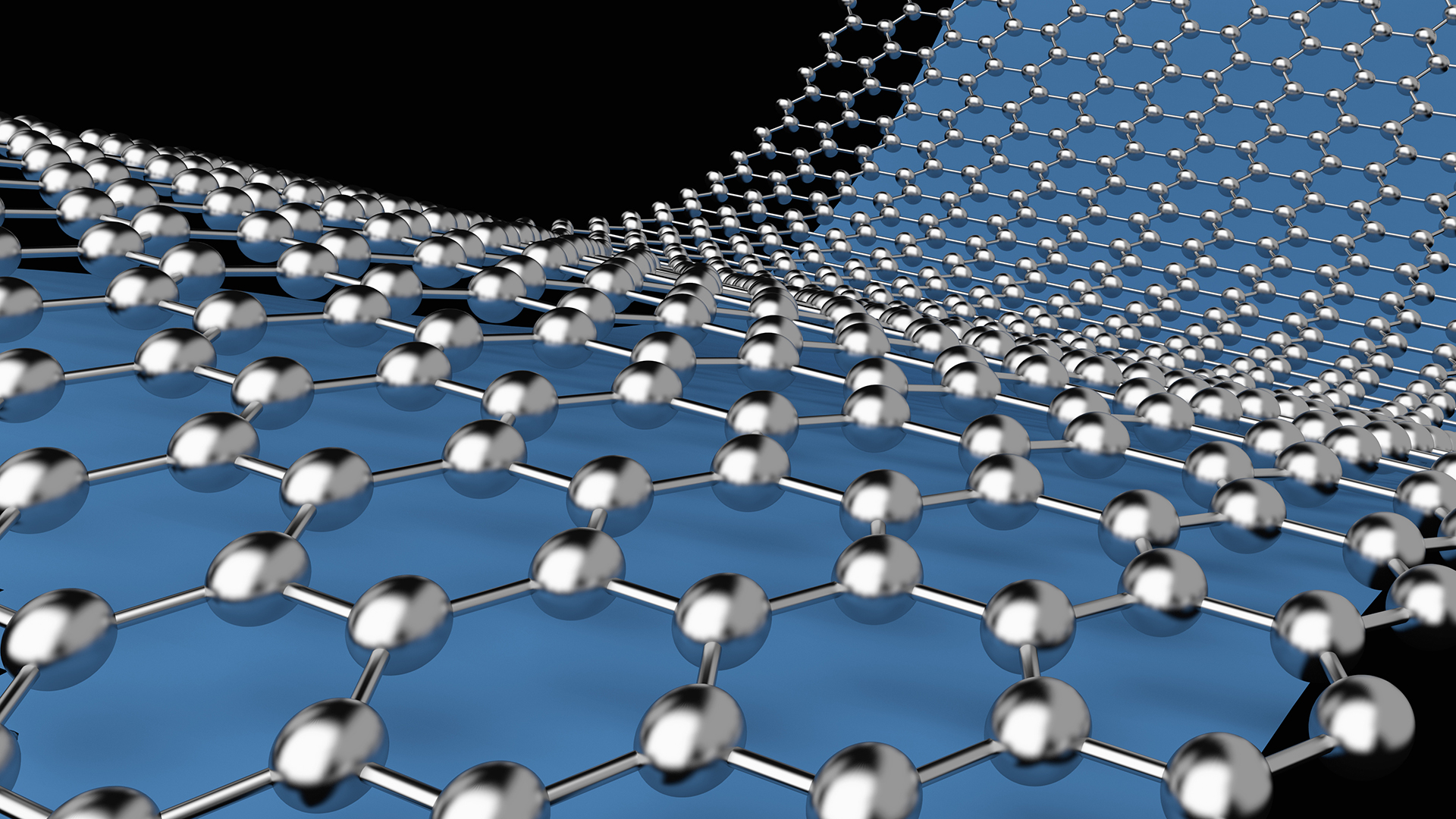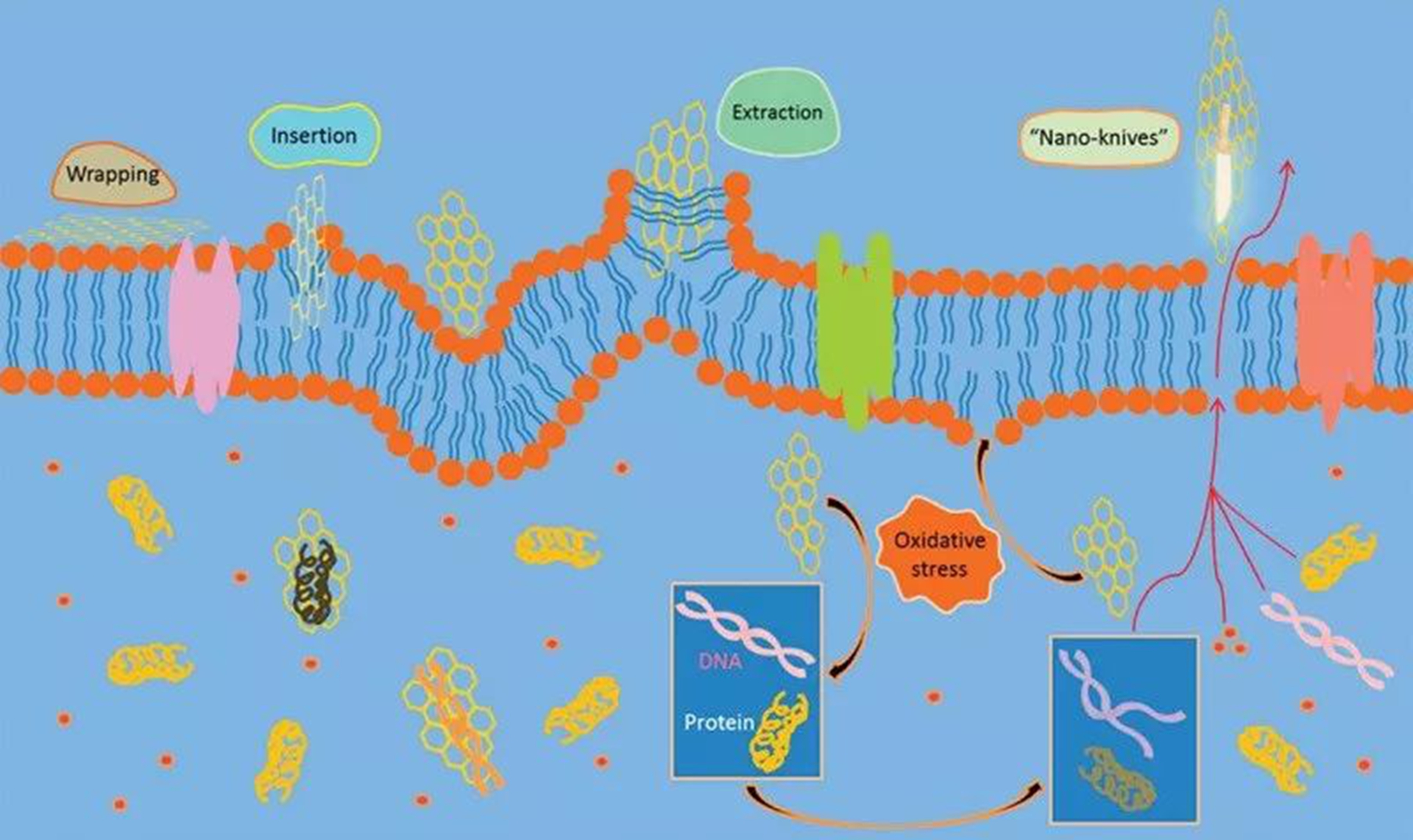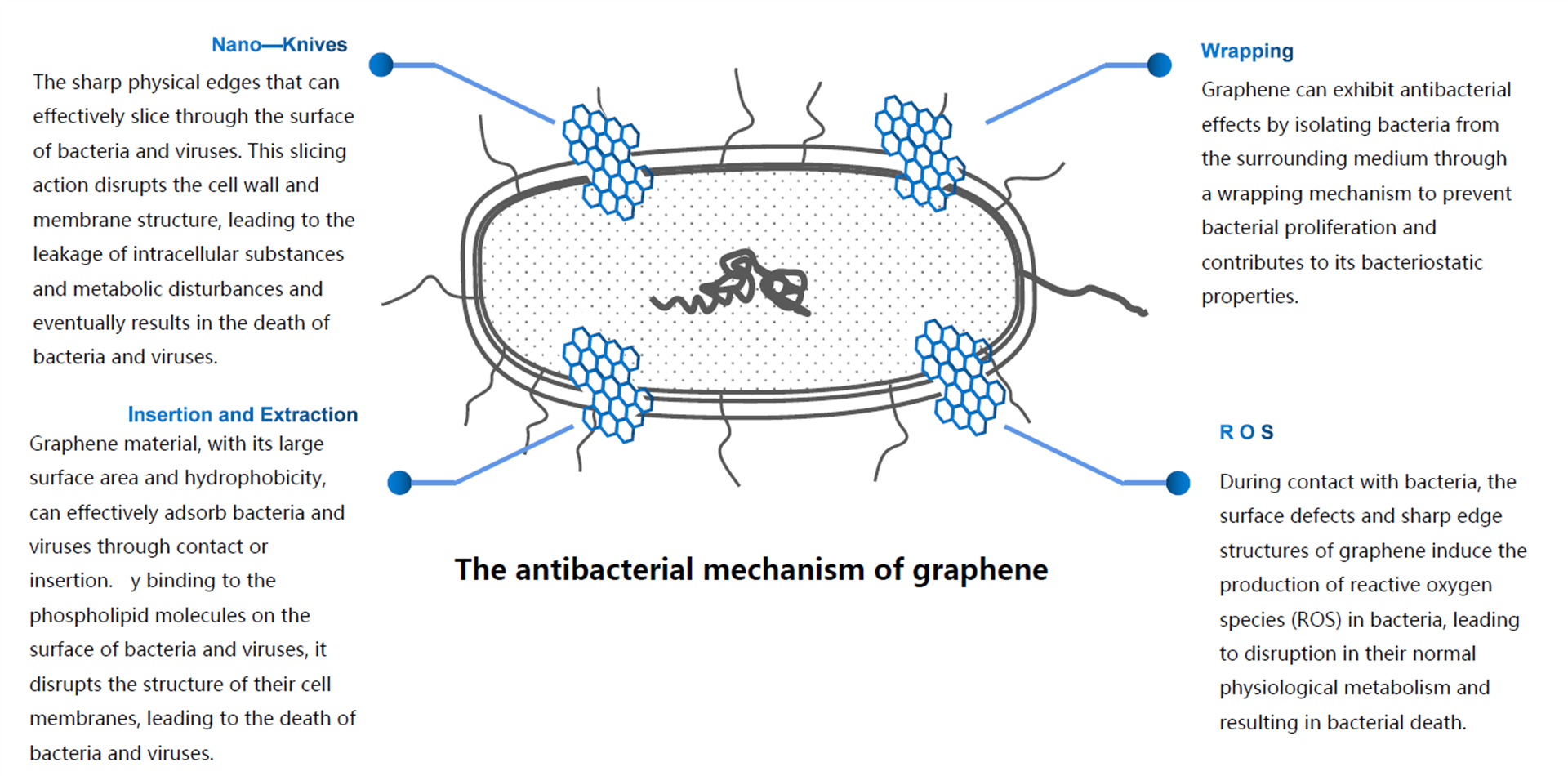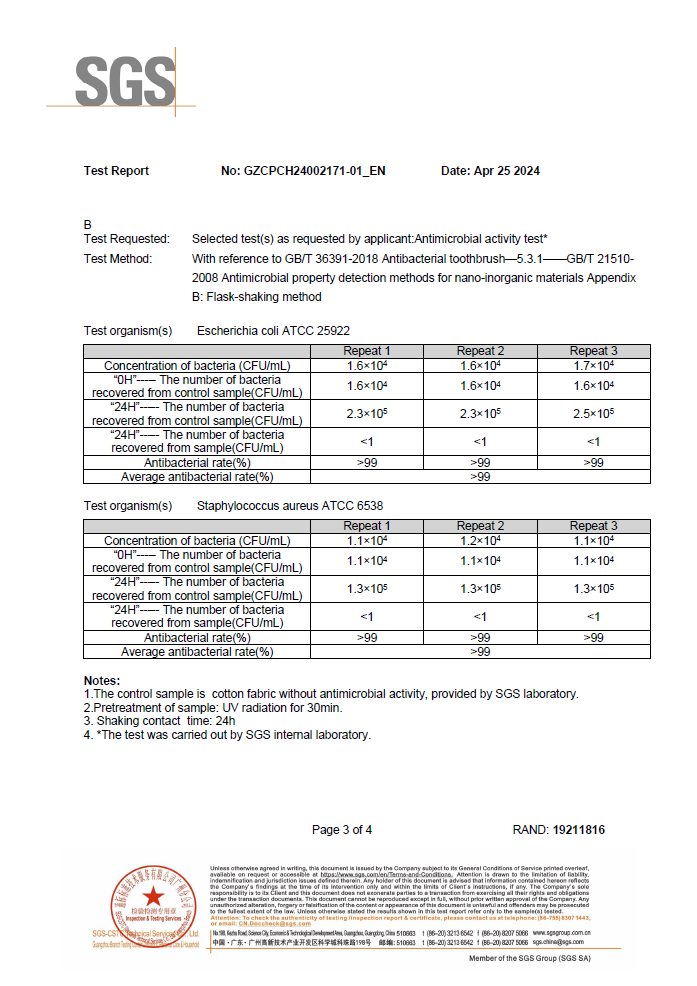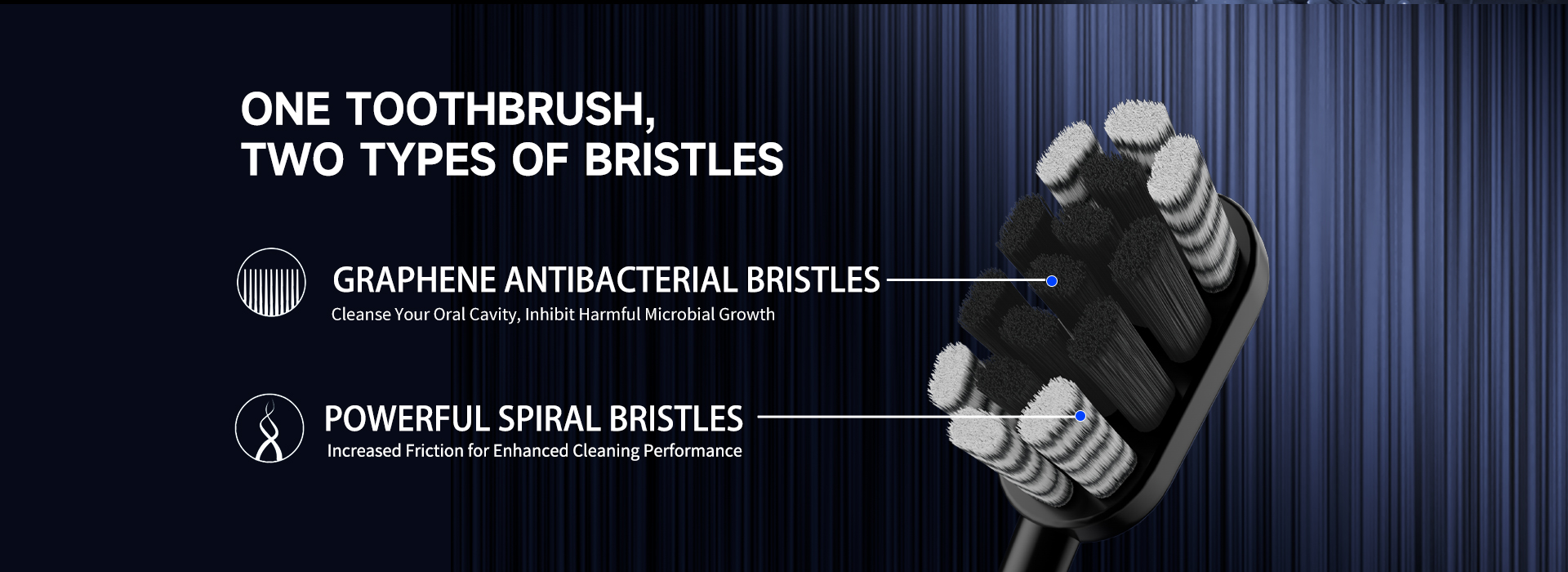The oral cavity is a complex microecosystem with over 23,000 species of bacteria colonizing it. In certain situations, these bacteria can directly cause oral diseases and even impact overall health. However, the use of antibiotics presents various issues, including rapid drug degradation, release, and the development of antibiotic resistance. In recent years, the research focus has shifted towards the development of composite materials with excellent antimicrobial properties using nanomaterials. Currently, nanosilver ion-based antibacterial materials and graphene-based antibacterial materials are commonly used in the market. In this article, we will introduce the graphene antibacterial mechanism and application in toothbrush industry.
Graphene is a two-dimensional carbon nanomaterial composed of carbon atoms arranged in a hexagonal lattice with sp2 hybridized orbitals. Its derivatives include graphene (G), graphene oxide (GO), and reduced graphene oxide (rGO). They possess unique three-dimensional surface chemical structures and sharp physical edge structures.Research has demonstrated the outstanding antibacterial properties and biocompatibility of graphene as well as its derivatives. Moreover, they serve as ideal carriers for antimicrobial agents, making them highly promising for various applications in oral antimicrobial fields.
The advantages of graphene antibacterial materials
- Safety and Environmental Friendliness, Non-toxic: Prolonged use of nanosilver can raise safety concerns due to potential accumulation and migration. High concentrations of silver can be highly harmful to humans and mammals, as it may enter mitochondria, embryos, liver, circulatory systems, and other parts of the body through respiration. Studies have indicated that nanosilver particles exhibit stronger toxicity compared to other metal nanoparticles such as aluminum and gold. As a result, the European Union maintains a cautious stance regarding the application of nanosilver antimicrobial materials. In contrast, graphene-based antimicrobial materials utilize multiple synergistic physical sterilization mechanisms, such as “nano-knives.” They can completely destroy and inhibit bacterial growth without any chemical toxicity. These materials seamlessly integrate with polymer materials, so as to ensure no material detachment or migration. The safety and stability of graphene-based materials are well guaranteed. For example, in practical product applications, graphene-based PE (polyethylene) food preservation films/bags have obtained certification for food-grade compliance according to Regulation (EU) 2020/1245 in the European Union.
- Long-Term Stability: Graphene-based materials demonstrate superior stability and durability, providing a long-lasting antimicrobial effect for over 10 years. This ensures their antimicrobial properties remain effective over extended periods of use, making them suitable for long-term applications in oral hygiene products.
- Biocompatibility and Safety: Graphene, as a two-dimensional carbon-based material, exhibits excellent biocompatibility and safety. It is compatible with a variety of resin-based materials and can be safely used in oral care products without causing any adverse effects on oral tissues or overall health.
- Broad-Spectrum Activity: Graphene-based materials exhibit broad-spectrum antimicrobial activity, capable of targeting a wide range of bacteria, including both Gram-positive and Gram-negative strains. They have shown antibacterial rates of 99.9% against Escherichia coli, Staphylococcus aureus, and Candida albicans. This makes them versatile and applicable in various oral health conditions.
The graphene antibacterial mechanism is as follows:
The antibacterial mechanism of graphene has been extensively studied by an international collaborative team. Including the researchers from the Chinese Academy of Sciences, IBM Watson Research Center, and Columbia University. They have made significant progress in studying the molecular mechanisms of the interaction between graphene and bacterial cell membranes. Recent papers on this topic have been published in the journal “Nature Nanotechnology.”
According to the team’s research, graphene has the ability to disrupt bacterial cell membranes, leading to the leakage of intracellular substances and bacterial death. This discovery suggests that graphene could potentially serve as a non-resistant physical “antibiotic.” The study further reveals that graphene not only inserts itself into bacterial cell membranes, causing cuts, but also extracts phospholipid molecules directly from the membrane, thereby disrupting the membrane structure and killing bacteria. Electron microscopy experiments have provided direct evidence of extensive void structures in bacterial cell membranes after interacting with oxidized graphene, supporting the theoretical calculations. This phenomenon of lipid molecule extraction and membrane disruption offers a novel molecular mechanism for understanding the cytotoxicity and antibacterial activity of nanomaterials. It will also facilitate further research on the biological effects of graphene nanomaterials and their applications in biomedicine.
The graphene antibacterial application in toothbrush industry:
Due to the above advantages of graphene composite materials, graphene antibacterial mechanism and application have attracted great interest from researchers and professionals in related industries.
Graphene antibacterial toothbrushes, introduced by MARBON group, utilize specially designed bristles made from graphene nanocomposite materials. So it can effectively inhibit the growth and reproduction of bacteria, thereby reducing the risk of oral diseases.
The bristles are soft yet resilient, allowing for gentle cleaning of teeth and gums while protecting enamel and gum health. The toothbrush also features an ergonomic handle design that provides a comfortable grip and convenient usage.
We firmly believe that this antibacterial toothbrush will deliver an exceptional oral care experience. It can effectively remove dental plaque and food debris. Additionally, it provides long-lasting antibacterial protection, ensuring your oral cavity stays fresh and healthy.
Conclusion:
Graphene antibacterial toothbrushes represent the latest advancement in the application of graphene materials in the antibacterial field. With their vast potential, graphene antibacterial toothbrushes are set to revolutionize oral care, providing individuals with a healthier and more comfortable oral care experience. As graphene material research progresses, graphene antibacterial toothbrushes will play an increasingly significant role in promoting oral health and well-being.
Post time: May-02-2024


